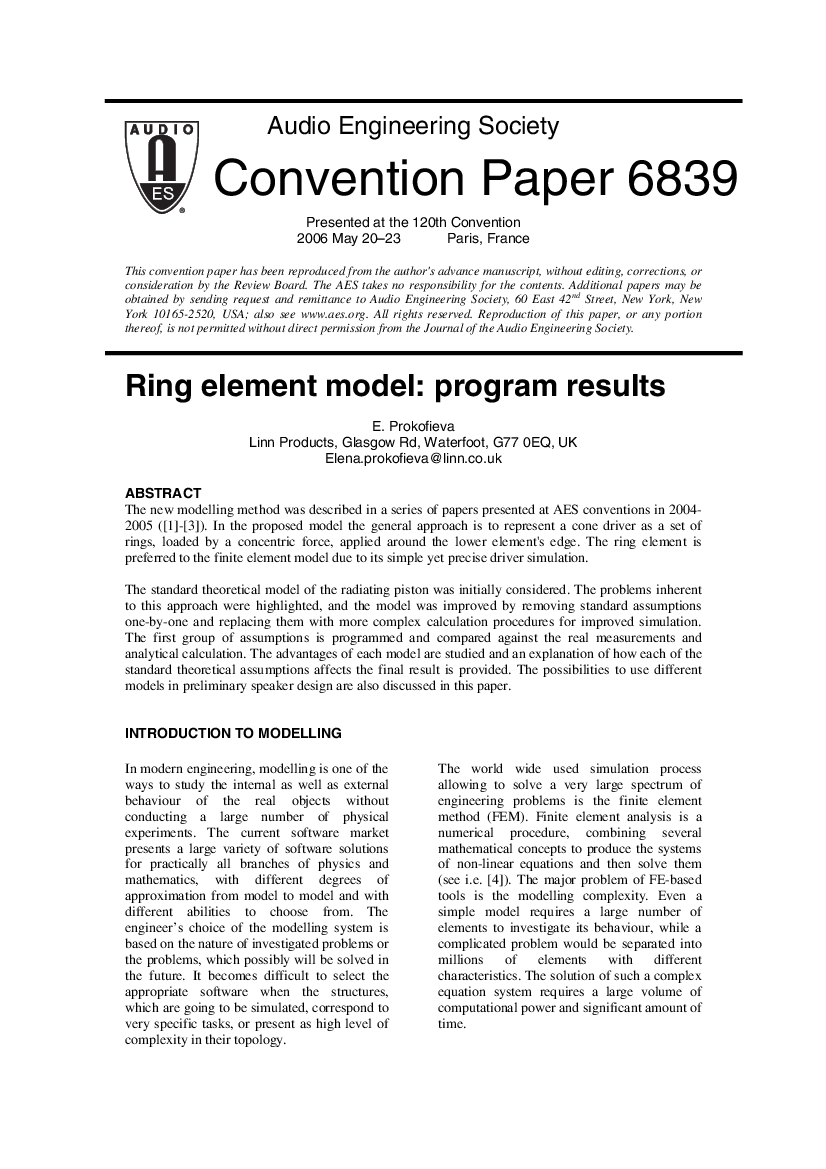Home / Publications / E-library page
You are currently logged in as an
Institutional Subscriber.
If you would like to logout,
please click on the button below.
Home / Publications / E-library page
Only AES members and Institutional Journal Subscribers can download
The new modelling method was described in a series of papers presented at AES conventions in 2004-2005 ([1]-[3]). In the proposed model the general approach is to represent a cone driver as a set of rings, loaded by a concentric force, applied around the lower element`s edge. The ring element is preferred to the finite element model due to its simple yet precise driver simulation. The standard theoretical model of the radiating piston was initially considered. The problems inherent to this approach were highlighted, and the model was improved by removing standard assumptions one-by-one and replacing them with more complex calculation procedures for improved simulation. The first group of assumptions is programmed and compared against the real measurements and analytical calculation. The advantages of each model are studied and an explanation of how each of the standard theoretical assumptions affects the final result is provided. The possibilities to use different models in preliminary speaker design are also discussed in this paper.
Author (s): Prokofieva, Elena
Affiliation:
Linn Products
(See document for exact affiliation information.)
AES Convention: 120
Paper Number:6839
Publication Date:
2006-05-06
Import into BibTeX
Session subject:
Loudspeakers and Sound Reinforcement
Permalink: https://aes2.org/publications/elibrary-page/?id=13643
(154KB)
Click to purchase paper as a non-member or login as an AES member. If your company or school subscribes to the E-Library then switch to the institutional version. If you are not an AES member Join the AES. If you need to check your member status, login to the Member Portal.

Prokofieva, Elena; 2006; Ring Element Model: Program Results [PDF]; Linn Products; Paper 6839; Available from: https://aes2.org/publications/elibrary-page/?id=13643
Prokofieva, Elena; Ring Element Model: Program Results [PDF]; Linn Products; Paper 6839; 2006 Available: https://aes2.org/publications/elibrary-page/?id=13643